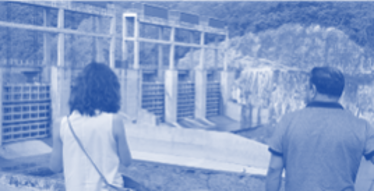Environmental Risk Management

Photo Credit: Image by Freepik
On this page: Assessing the project’s potential environmental impact and implementing strong risk management measures is important to assure buyers that the projects have a net positive impact on the environment. Read more below, or visit Strategic Guidance for Country System Assessments, Guidance for Countries in Assessing ERC Projects, or Mobilizing ERC Finance.
C2: Environmental risk management: This criterion assesses the robustness of a given project’s measures and procedures to ensure that it does not have a net negative impact on the environment, biodiversity, ecosystems, and resources in its construction and throughout its lifetime, following the ‘do no harm’ principle. While projects in jurisdictions that require an environmental impact assessment (EIA) or any other form of biodiversity or ecosystem impact assessment should do so, recognizing that such requirements could differ at a national and subnational level, this assessment is intended for an independent review based on key vulnerable elements that require environmental risk management to avoid and mitigate irreversible harm. Assessing the project’s potential environmental impact and implementing strong risk management measures is important to assure buyers that the projects have a net positive impact on the environment and that offsetting their emissions using the ERCs from the project will not result in reputational or institutional risks that go against their environmental policies. For this assessment, using the project documents to review the project's measures and risk management measures for identifying, avoiding, and minimizing potential negative impact on the environment is suggested. For projects that follow a broader company- or organization-level policy, the assessment can be done based on the elements of the policy, withstanding that the elements of the policy applies wholly to the project, or if otherwise, the scores should be adjusted in a conservative approach. The same approach can be used for assessing C3: Social risk management and benefits. There are three assessable subcomponents to this criterion, where the project’s potential impact on each subcomponent, and risk management measures to address such impacts, are assessed against the guideposts provided in Figure 4.15: Figure 4.15. Guideposts for rating environmental risk management [For non-AFOLU] Project assesses its near- and long-term potential impact on air, water, and land and describes clear procedures to avoid the release of such pollutants, including in the case of accidents. Project does not release or use any hazardous materials and chemicals, including the use of chemical pesticides and fertilizers. Project does not release or use any hazardous materials and chemicals, including the use of chemical pesticides and fertilizers. Where project involves the use of landscape, it ensures that there is no net degradation in existing landscape function and services by identifying potential impact on soil and putting in place measures to minimize soil degradation and reduce soil erosion. [For non-AFOLU] Project assesses its near- and long-term potential impact on air, water, and land from the release of pollutants and has procedures to minimize the release of such pollutants. Project avoids or minimizes, when not feasible, the release or use of hazardous materials and chemicals, where the use of chemical pesticides and fertilizers is justified with appropriate controls. Where project activities produce waste, project ensures that waste is treated or disposed of in an environmentally sound manner. Where project involves the use of landscape, project ensures that there is no net degradation in existing landscape function and services by identifying potential impact on soil and putting in place measures to minimize soil degradation and reduce soil erosion. Project assesses its near- and long-term impact on terrestrial and marine biodiversity and ecosystems, including identifying its proximity to areas of importance to biodiversity and HCV, and describes clear procedures to ensure that there will be no net negative impact. Project does not convert or degrade natural habitats. Project does not introduce any new non-native species or use genetically modified organisms (GMOs). Project assesses its impact on terrestrial and marine biodiversity and ecosystems, including identifying its proximity to areas of importance to biodiversity and high conservation value (HCV) areas, and has procedures to ensure that there will be no net negative impact. Project does not significantly convert or degrade natural habitats and has designed mitigation measures to achieve no net loss of biodiversity if such implications are imposed. Project does not use GMOs and if introduces non-native species, conducts an environmental and biodiversity assessment to ensure no net negative impact. Project identifies and assesses its use of energy, water, and other resources and material inputs and describes clear procedures to ensure the efficient use of these resources. Where project takes place in a water-scarce or water-stressed area, the opinions and recommendations of an expert stakeholder are sought and demonstrated as being considered and incorporated into the project design. Project has procedures to prevent the excessive use of energy, water, and other resources and material inputs. Where project takes place in a water-scarce or water-stressed area, the opinions and recommendations of an expert stakeholder are sought and demonstrated as being considered and incorporated into the project design. Box 3 Case Study: Vietnam Renewable Energy Development Project Figure 4.16 Image of one of the REDP's powerplants in Vietnam (Image obtained from World Bank) The Vietnam Renewable Energy Development Project (REDP), registered under a Programme of Activities (PoA) on the Clean Development Mechanism (CDM), is a World Bank-supported project that aims to develop hydropower projects in Vietnam by focusing on carbon finance to overcome investment barriers faced by the renewable energy sector. The project is in its second crediting period and has been ongoing since its registration in 2012. The hydropower plants constructed under REDP were designed with best-practice environmental and social framework requirements, where its environmental safeguards framework set strong precautionary measures for managing and minimizing potential negative environmental impact and risks, which are especially crucial for hydropower projects where such risks are high. The projects were constructed in rural and remote areas following its risk management measures and procedures, which enabled it to bring significant positive impact to the local people. The projects increased access to electricity for the communities and created jobs both during the construction and continued operation of the power plants. Figure 4.17. Examples of best practice environmental risk management measures of the REDP (Source: Clean Development Mechanism, Programme of Activities 6810) Air, water, and land quality Projects conducted an EIA to assess potential impact during the plant's construction and operations and assessed extent and duration of potential impact. Projects also conducted and documented an environmental management plan to propose mitigation measures to be implemented during the construction and operation phases of the projects to minimize potential negative impacts. Any waste produced by the projects will be properly treated; e.g., waste rock will be used for upgrading roads. After the completion of the project, the site will be recovered and planted with trees to prevent soil erosion. Biodiversity and ecosystems EIA includes an analysis of the projects' downstream impacts on aquatic biodiversity and identifying mitigation measures. Projects follow the REDP's environmental framework requirements that prohibits projects from converting or degrading natural habitats. Use of resources Projects implement environmentally friendly practices such as the maintenance of a minimum ecological flow and monitors water supply and potential changes in local water resources.
Rationale for rating
Rating

Subcomponents
Examples of best practice mechanisms
Rating
This section is intended to be a living document and will be reviewed at regular intervals. The Guidelines have not been prepared with any specific transaction in mind and are meant to serve only as general guidance. It is therefore critical that the Guidelines be reviewed and adapted for specific transactions. Unless expressly stated otherwise, the findings, interpretations, and conclusions expressed in the Materials in this Site are those of the various authors of the Materials and are not necessarily those of The World Bank Group, its member institutions, or their respective Boards of Executive Directors or member countries. For feedback on the content of this section of the website or suggestions for links or materials that could be included, please contact the PPPLRC at ppp@worldbank.org.
Updated: June 4, 2024
TABLE OF CONTENTS
UNLOCKING GLOBAL EMISSION REDUCTION CREDIT
Guidance for Countries in Assessing ERC Projects
1. Introduction to Emission Reduction Credits
• The World Bank's Emission Reduction Program
•Classification of Emissions Reduction Credit
• Policy Context of Emissions Reduction Credit
2. Objective of the Guidance for Countries in Assessing ERC Projects
• Objective of Project Preparation Guidelines
• Introduction to the Project Assessment Framework
• Process to Conducting Assessments
• S1: Green Economy Priorities
• S3: Article 6 Readiness and Eligibility
4. Conducting the Initial Profiling and Making a Preliminary Decision
• F2: Additional Value Enabled by Project
• C1, C2, and C3: Carbon Integrity and Environmental and Social Risk Management
5. Conducting the Project Assessment and Making the Final Decision
• F1: Project ERC value and F2: Additional Value Enabled by Project
• Q2: Marketing, Sales, and Pricing
• Q3: Project Governance and Structure
• C2: Environmental Risk Management
• C3: Social Risk Management and Benefits
6. Further Guidance for Application
• Country Context-driven Factors
• Considerations for Future Scope
Abbreviations: Guidance for Countries in Assessing ERC Projects